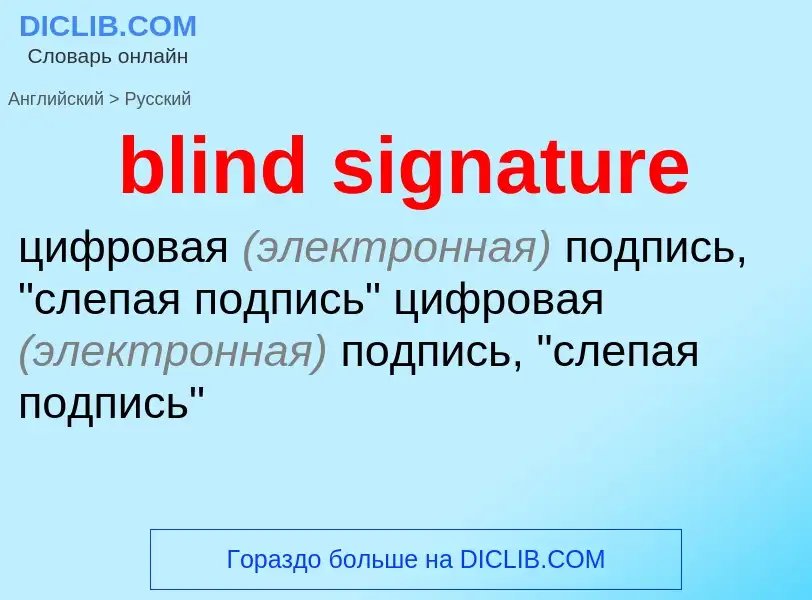Translation and analysis of words by ChatGPT artificial intelligence
On this page you can get a detailed analysis of a word or phrase, produced by the best artificial intelligence technology to date:
- how the word is used
- frequency of use
- it is used more often in oral or written speech
- word translation options
- usage examples (several phrases with translation)
- etymology
blind signature - translation to russian
математика
сигнатура метрики
['signɔtʃə]
общая лексика
сигнатура
специфическое содержимое памяти, характеризующее объект, например компьютерный вирус
отличительный признак
подпись
ставить подпись, подписывать
сигнатурный
нефтегазовая промышленность
рисунок волны, форма волны (на сейсмограмме)
синоним
существительное
['signətʃə]
общая лексика
(собственноручная) подпись
автограф
подписание
музыкальная шапка (радиопрограммы и т. п.)
подпись
полиграфия
сигнатура
сфальцованный печатный лист
музыка
ключевые знаки
ключ
радиотехника
музыкальная шапка
глагол
общая лексика
подписывать
ставить подпись
полиграфия
ставить сигнатуру
Definition
Wikipedia

In cryptography a blind signature, as introduced by David Chaum, is a form of digital signature in which the content of a message is disguised (blinded) before it is signed. The resulting blind signature can be publicly verified against the original, unblinded message in the manner of a regular digital signature. Blind signatures are typically employed in privacy-related protocols where the signer and message author are different parties. Examples include cryptographic election systems and digital cash schemes.
An often-used analogy to the cryptographic blind signature is the physical act of a voter enclosing a completed anonymous ballot in a special carbon paper lined envelope that has the voter's credentials pre-printed on the outside. An official verifies the credentials and signs the envelope, thereby transferring his signature to the ballot inside via the carbon paper. Once signed, the package is given back to the voter, who transfers the now signed ballot to a new unmarked normal envelope. Thus, the signer does not view the message content, but a third party can later verify the signature and know that the signature is valid within the limitations of the underlying signature scheme.
Blind signatures can also be used to provide unlinkability, which prevents the signer from linking the blinded message it signs to a later un-blinded version that it may be called upon to verify. In this case, the signer's response is first "un-blinded" prior to verification in such a way that the signature remains valid for the un-blinded message. This can be useful in schemes where anonymity is required.
Blind signature schemes can be implemented using a number of common public key signing schemes, for instance RSA and DSA. To perform such a signature, the message is first "blinded", typically by combining it in some way with a random "blinding factor". The blinded message is passed to a signer, who then signs it using a standard signing algorithm. The resulting message, along with the blinding factor, can be later verified against the signer's public key. In some blind signature schemes, such as RSA, it is even possible to remove the blinding factor from the signature before it is verified. In these schemes, the final output (message/signature) of the blind signature scheme is identical to that of the normal signing protocol.




